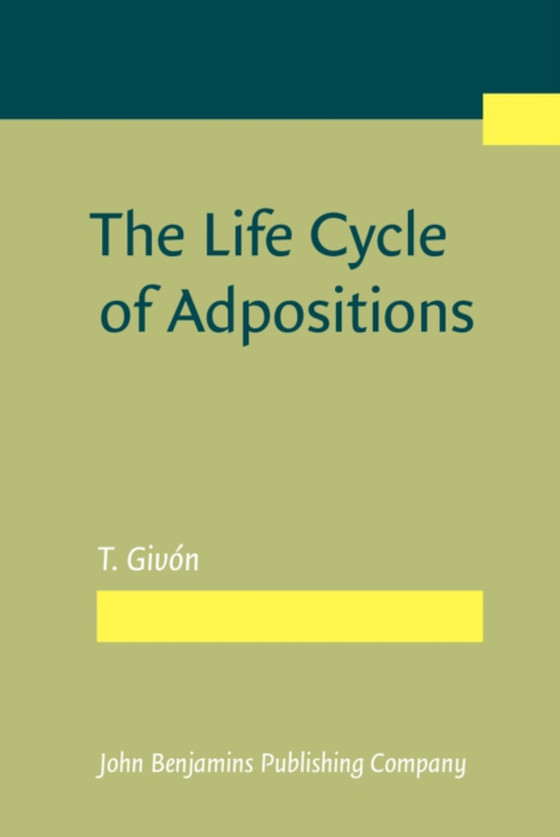
Life Cycle of Adpositions e-bog
729,17 DKK
(inkl. moms 911,46 DKK)
Adpositions are used, universally, to mark the roles of nominal participants in the verbal clause, most commonly indirect object roles. Practically all languages seem to have such markers, which begin their diachronic life as lexical words -- in this case either serial verbs or positional nouns. In many languages, however, adpositions also seem to have extended their diachronic life one step fu...
E-bog
729,17 DKK
Udgivet
2 juli 2021
Længde
217 sider
Genrer
Historical and comparative linguistics
Sprog
English
Format
epub
Beskyttelse
LCP
ISBN
9789027259844
Adpositions are used, universally, to mark the roles of nominal participants in the verbal clause, most commonly indirect object roles. Practically all languages seem to have such markers, which begin their diachronic life as lexical words -- in this case either serial verbs or positional nouns. In many languages, however, adpositions also seem to have extended their diachronic life one step further, becoming verbal affixes. The main focus of this book is the tail-end of the diachronic life cycle of adpositions. That is, the process by which, having arisen first as nominal-attached prepositions or post-positions, they wind up attaching themselves to verbs. Our core puzzle is thus fairly transparent: How and why should morphemes that pertain functionally to nominals, and begin their diachronic life-cycle as nominal grammatical operators, wind up as verbal morphology? While the core five chapters of this book focus on the rise of verb-attached prepositions in Homeric Greek, its theoretical perspective is broader, perched at the intersection of three closely intertwined core components of the study of human language: (a) the communicative function of grammar; (b) the balance between universality and cross-language diversity of grammars; and (c) the diachrony of grammatical constructions, how they mutate over time. While paying well-deserved homage to the traditional Classical scholarship, this study is firmly wedded to the assumption, indeed presupposition, that Homeric Greek is just another natural language, spoken before written, designed as an instrument of communication, and subject to the same universal constraints as all human languages. And further, that those constraints--so-called language universals--express themselves most conspicuously in diachronic change. Lastly, in analyzing the synchronic variation and text distribution of prepositional constructions in Homeric Greek, this study relies primarily on the theory-laden method of Internal Reconstruction.
 Dansk
Dansk

